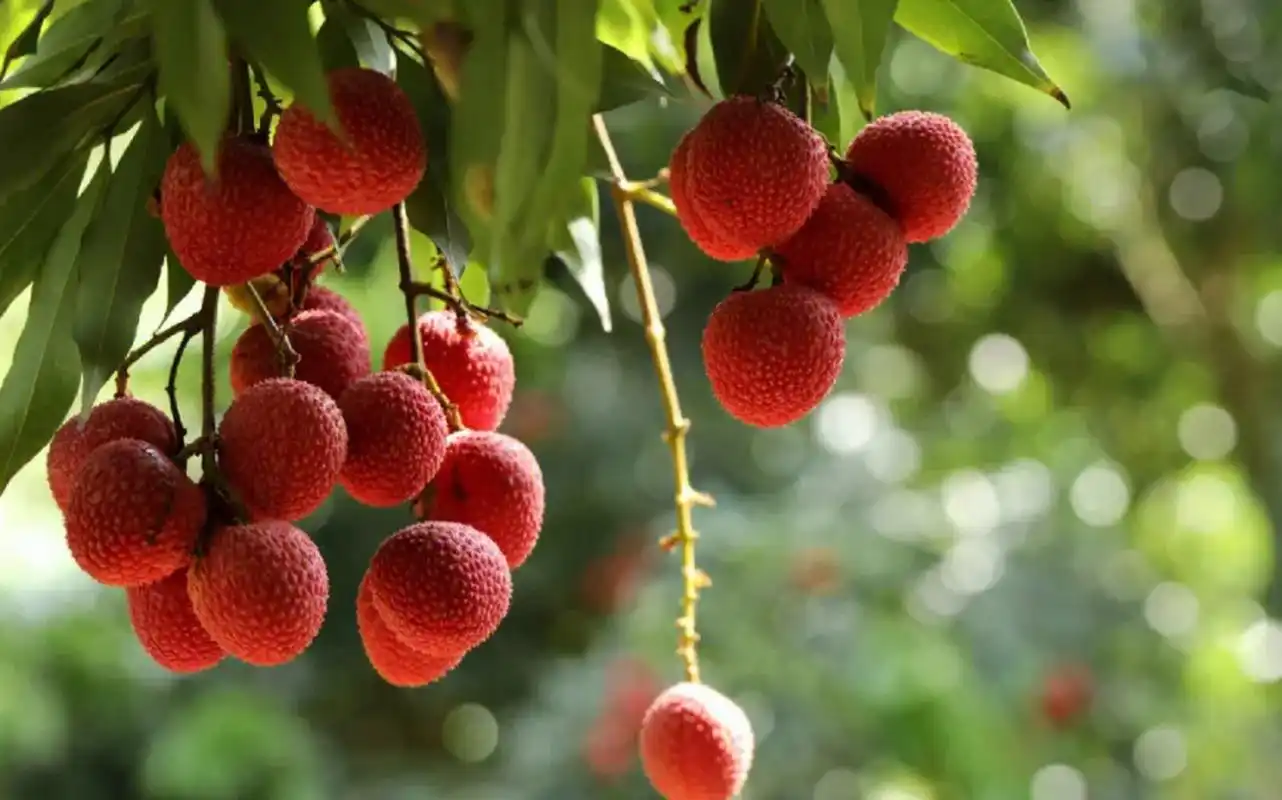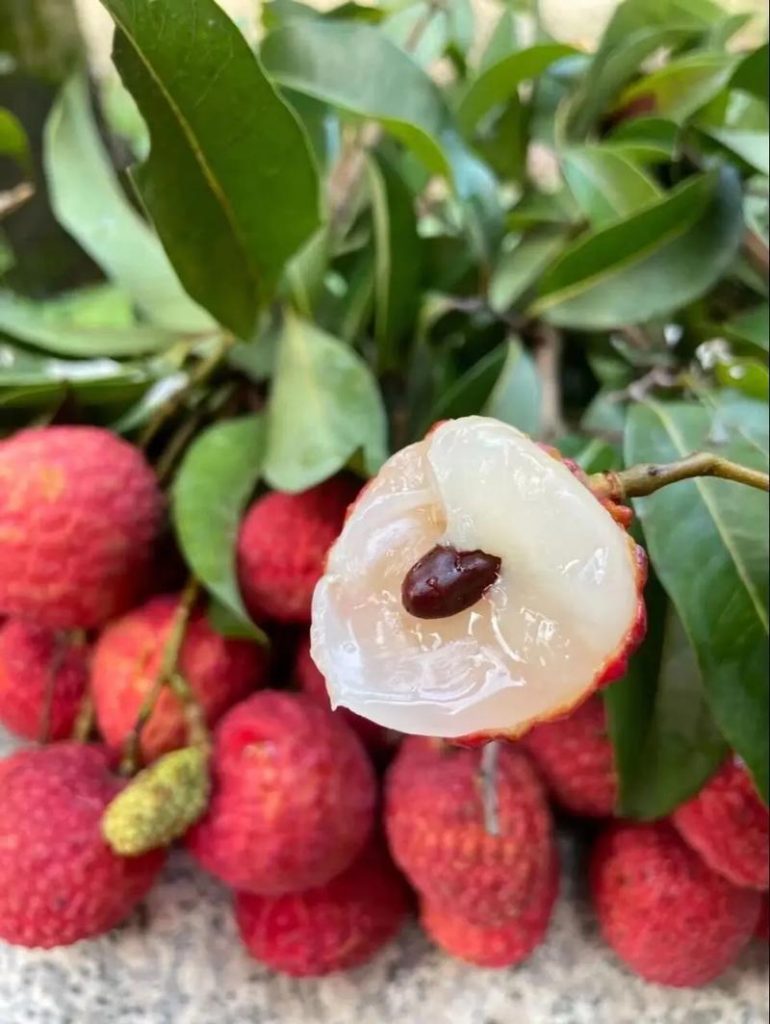


China’s lychee industry, renowned for its vast production and cultural heritage, is now leading a green revolution that harmonizes ecological stewardship with global trade ambitions. By integrating renewable energy, circular economy models, and eco-friendly technologies, the sector is redefining sustainability in fruit exports. This article explores how China’s lychee producers are balancing environmental responsibility with market demands, setting new benchmarks for the global agricultural trade.
—
1. Renewable Energy in Cultivation and Processing
Solar-Powered Orchards
– Off-Grid Farming: Solar panels installed across orchards in Hainan and Guangdong power irrigation systems and sensor networks, reducing reliance on fossil fuels. Farms report a 60% drop in energy costs and a 45% reduction in carbon emissions.
– Hybrid Energy Systems: Wind-solar hybrid stations in Fujian provide uninterrupted power for cold storage units, ensuring lychee freshness even during grid outages.
Biogas from Agricultural Waste
– Lychee peels and pits, once discarded, are now processed into biogas through anaerobic digestion. A cooperative in Guangxi generates enough biogas to fuel 80% of its farm machinery, diverting 1,200 tons of waste annually from landfills.
—
2. Circular Economy: From Waste to Wealth
Upcycled Byproducts
– Natural Dyes and Cosmetics: Lychee peels are rich in antioxidants and polyphenols, making them ideal for natural dyes and skincare products. A Yunnan-based initiative supplies lychee-derived extracts to eco-conscious cosmetic brands in Europe.
– Biochar for Soil Health: Carbonized lychee pits are used as biochar, improving soil fertility and water retention. Trials in Guangdong show a 20% increase in yields for intercropped vegetables like spinach and bok choy.
Zero-Waste Packaging
– Compostable clamshells made from rice husks and cassava starch replace plastic packaging. These materials decompose within 90 days, aligning with EU single-use plastic bans.
—
3. Climate-Resilient Farming Techniques
Agroforestry and Biodiversity
– Lychee trees are interplanted with shade-tolerant crops like ginger and turmeric, creating microclimates that reduce soil erosion and pest outbreaks. In Guangxi, this method has increased farm incomes by 35% while enhancing biodiversity.
– Drought-Resistant Cultivars: New hybrids developed through gene editing require 30% less water, critical for regions like Yunnan facing prolonged dry seasons.
Precision Water Management
– IoT-enabled drip irrigation systems deliver water directly to roots, minimizing waste. A pilot project in Hainan reduced water usage by 50% while maintaining optimal fruit quality.
—
4. Eco-Conscious Supply Chains
Carbon-Neutral Logistics
– Green Cold Chain: Solar-powered refrigerated trucks and containers maintain temperatures during transport, cutting emissions by 40% compared to diesel alternatives.
– Rail Over Air: The China-Europe Railway Express transports lychees to Moscow in 12 days, emitting 75% less CO₂ than air freight. This shift has expanded access to Eastern European markets sustainably.
Blockchain for Ethical Sourcing
– Digital ledgers track every step of the supply chain, verifying compliance with sustainability certifications like Rainforest Alliance. European retailers use this data to meet ESG reporting requirements and attract eco-conscious consumers.
—
5. Policy Frameworks and Global Collaboration
Government Incentives
– Subsidies cover 50% of costs for solar installations, biogas digesters, and organic certifications, encouraging smallholders to adopt green practices.
– Tax breaks are offered to exporters achieving carbon-neutral certification, accelerating industry-wide sustainability goals.
International Partnerships
– Joint research initiatives with EU agricultural institutes focus on developing low-carbon farming techniques. A Sino-Dutch project in Fujian has pioneered lychee-flower-based biofuels for processing facilities.
– Participation in global climate agreements, such as the UN’s Climate Neutral Now Initiative, reinforces China’s commitment to reducing agricultural emissions.
—
Challenges and Adaptive Strategies
High Initial Investment
– Solution: Leasing models for solar equipment and biogas plants allow farmers to pay through energy savings over time.
Market Education
– Solution: “Eco-Lychee” certification labels and QR code storytelling campaigns educate consumers on sustainability benefits, justifying price premiums.
Regulatory Complexity
– Solution: Centralized digital platforms streamline compliance with international standards like EU Organic and USDA-NOP, reducing administrative burdens.
—
Vision 2030: A Blueprint for Sustainable Agriculture
1. 100% Renewable Energy: Transition all lychee farms and processing units to solar, wind, or biogas power.
2. Zero Waste: Achieve 95% upcycling of lychee byproducts into commercial products.
3. Global Leadership: Establish China as the benchmark for sustainable fruit exports through ISO-certified green practices.
Article link:https://www.vlefooena.com/manufacturer/3524

No reply content